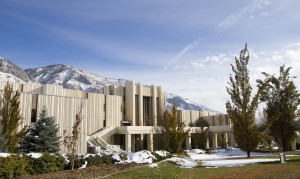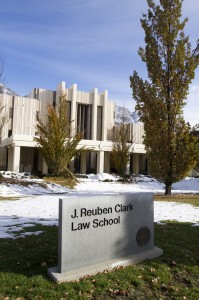Decreasing applications and nationwide uncertainty about job prospects mean that law school may not be as simple a decision as it used to be for recent graduates.
According to the Law School Admissions Council, which administers the Law School Admissions Test, the number of people applying to American Bar Association-accredited law schools each fall has steadily dropped from about 98,700 in 2004 to 68,000 in 2012.
The drop in applications may be related to concerns about available jobs after graduation. Stephen Howard graduated from the J. Reuben Clark Law School at BYU in 1999 and works in a Salt Lake City firm.
“The job market is tight right now,” Howard said. “Even experienced attorneys sometimes have a hard time finding jobs.”

Reading statistics about a particular law school does post-graduation job placement can be tricky because many placement rates count someone as employed even if his or her job is serving at a restaurant or is in a temporary position. The U.S. News and World Report issues an influential ranking of law schools each year that factors in job placement rates using American Bar Association data, but according to James Rasband, dean of the Clark Law School, that data hasn’t previously been very specific.
“They counted as employed a graduate who found any type of job at all,” Rasband said. “This methodology was not helpful to prospective law students. I am pleased that they adopted a more transparent system of reporting this year.”
BYU has posted more detailed data on its website under “Employment Stats,” and the American Bar Association has a searchable database for all its schools at employmentsummary.abaquestionnaire.org.
Rasband explained the Clark Law School’s placement statistics.
“For the class of 2012, 78.2 percent of our graduates found full-time, long-term jobs for which bar passage was required or a (Juris Doctor) degree was a demonstrable advantage,” Rasband said. “(In other words) 63.95 percent had jobs for which bar passage was required, and 14.29 percent had jobs for which a J.D. was a demonstrable advantage. This number was quite close to our historical average. Over the last 12 years, an average of just over 76 percent of our graduates have found full-time, long-term jobs that required bar passage or for which a J.D. was a demonstrable advantage. Our estimate is that this puts us around the top 15–20 percent of the country.”
Of the 2012 Clark Law School graduating class, 22 percent had not found full-time, long-term jobs nine months after graduation – at least, not jobs that required bar passage or in which it was an advantage to have a Juris Doctor degree.

“(Of that group) 6.8 percent chose, for family reasons, to work part-time or not to seek employment at all,” Rasband said. “The number of graduates who make this choice tends to be a little higher at BYU, but it is a choice we honor and support.”
Of the remaining 15 percent, 6.1 percent were employed part time, 3.4 percent were working full time in another professional job for which a Juris Doctor wasn’t a stated advantage, 1 percent were pursuing another graduate degree and 4.8 percent were still looking for work, according to Rasband.
“The numbers are similar in other years, although there has been, in the last four years during the recession, some decline in classic law firm jobs,” he said.
There are 202 American Bar Association-accredited law schools, and BYU is number 44 in the 2014 U.S. News ranking. Some groups, such as Law School Transparency, are critical about the usefulness of the report for selecting law schools. Placement success only accounts for 20 percent of a school’s ranking when U.S. News computes its annual ranking of law schools. The rest comes from factors such as acceptance rate and assessment by law school faculty and legal professionals.
“For a student looking at any law school, they ought to look at cost, at the school’s policy on retention of scholarships given to entering students, at the geographic spread of employment opportunities, at the quality of their fellow students and at the quality of the faculty,” Rasband said.
Nathan Sumbot, a second-year law student at BYU, has a summer associate position at a firm in Salt Lake City and earned an English degree at BYU.
“If I were to give any advice, I would tell potential law students to think seriously about practicing law,” Sumbot said, recommending that students talk to practicing attorneys. “Make sure you would actually enjoy it, and don’t think about it only in the abstract. Find out what it’s like to be an attorney.”
The economic recession brought a realization among undergraduate students that there just isn’t enough room in the legal community for everyone to get a job, according to Sumbot.
“But if you want to find a job and enjoy studying law, I think you’ll find a job,” he said. “It might not be as flashy, might not be the same salary you were anticipating, but you’ll find work.”




